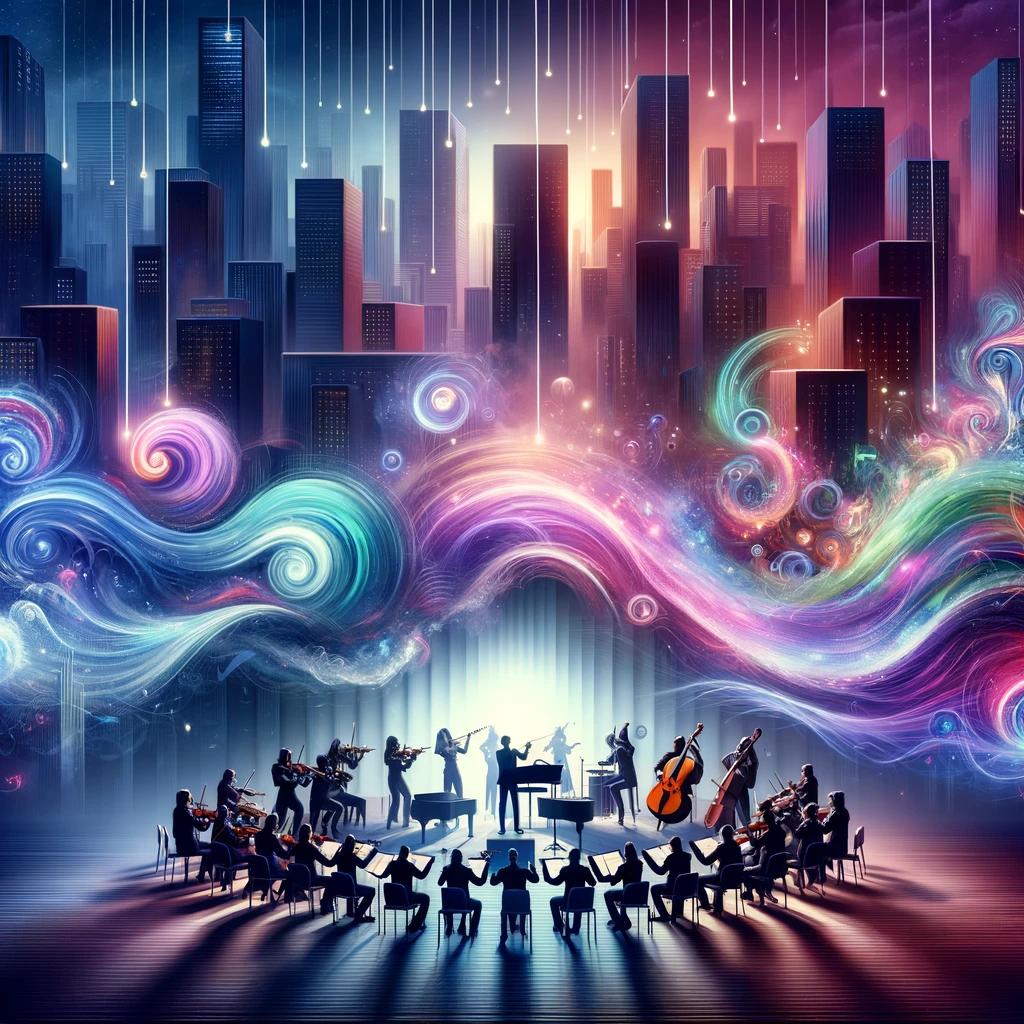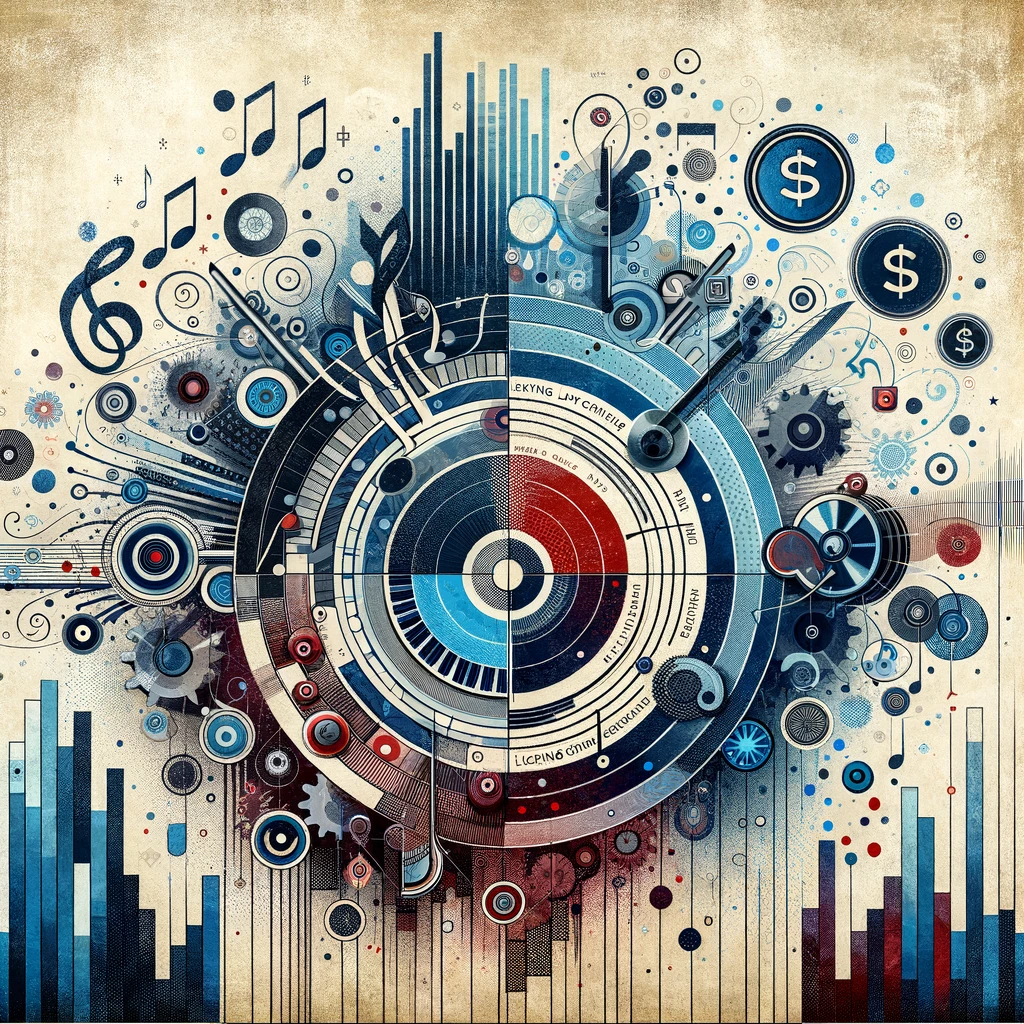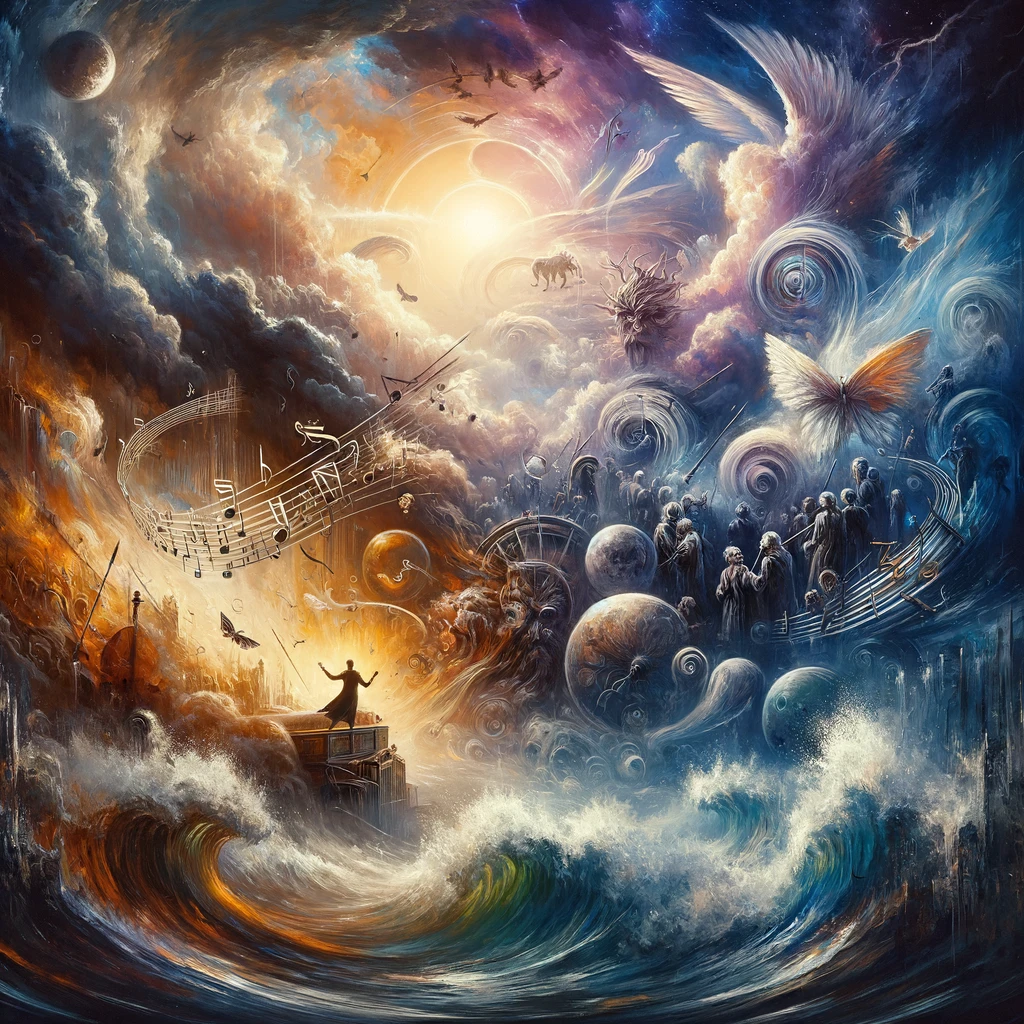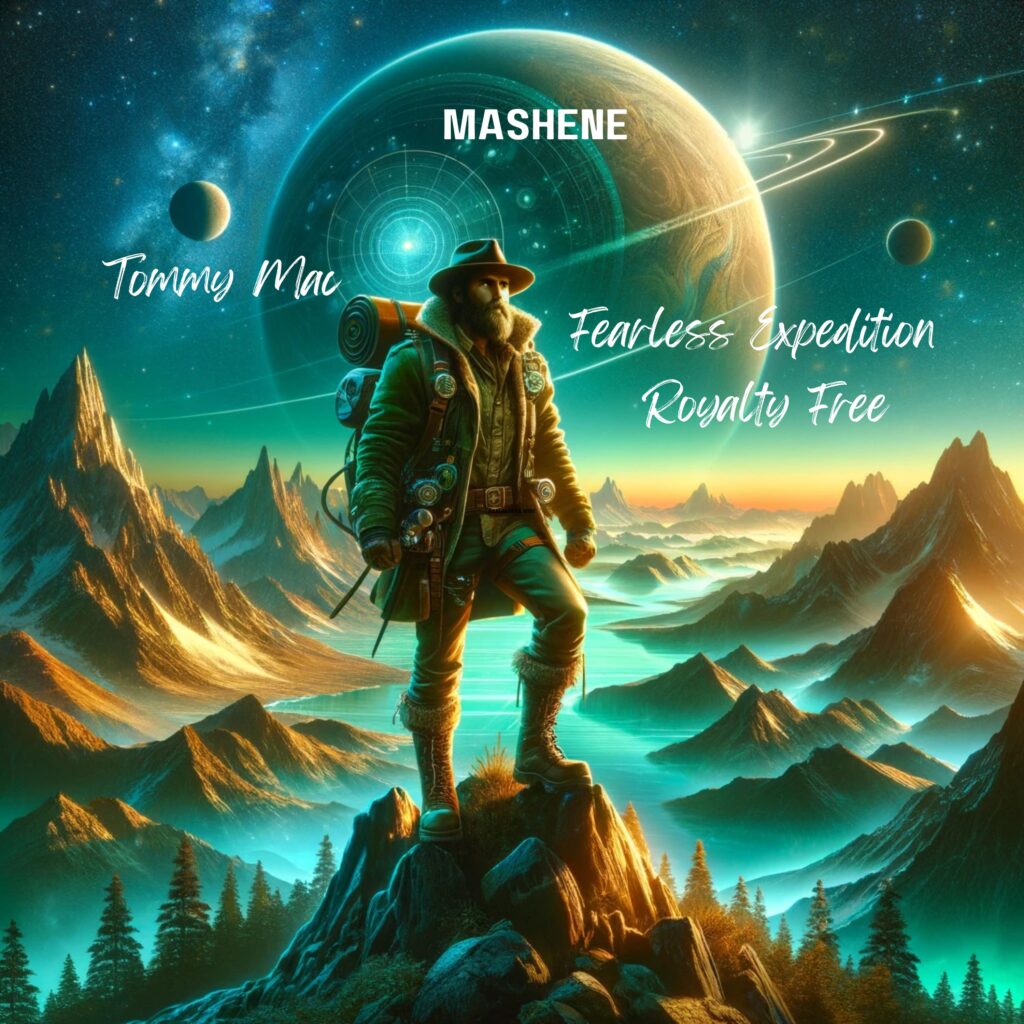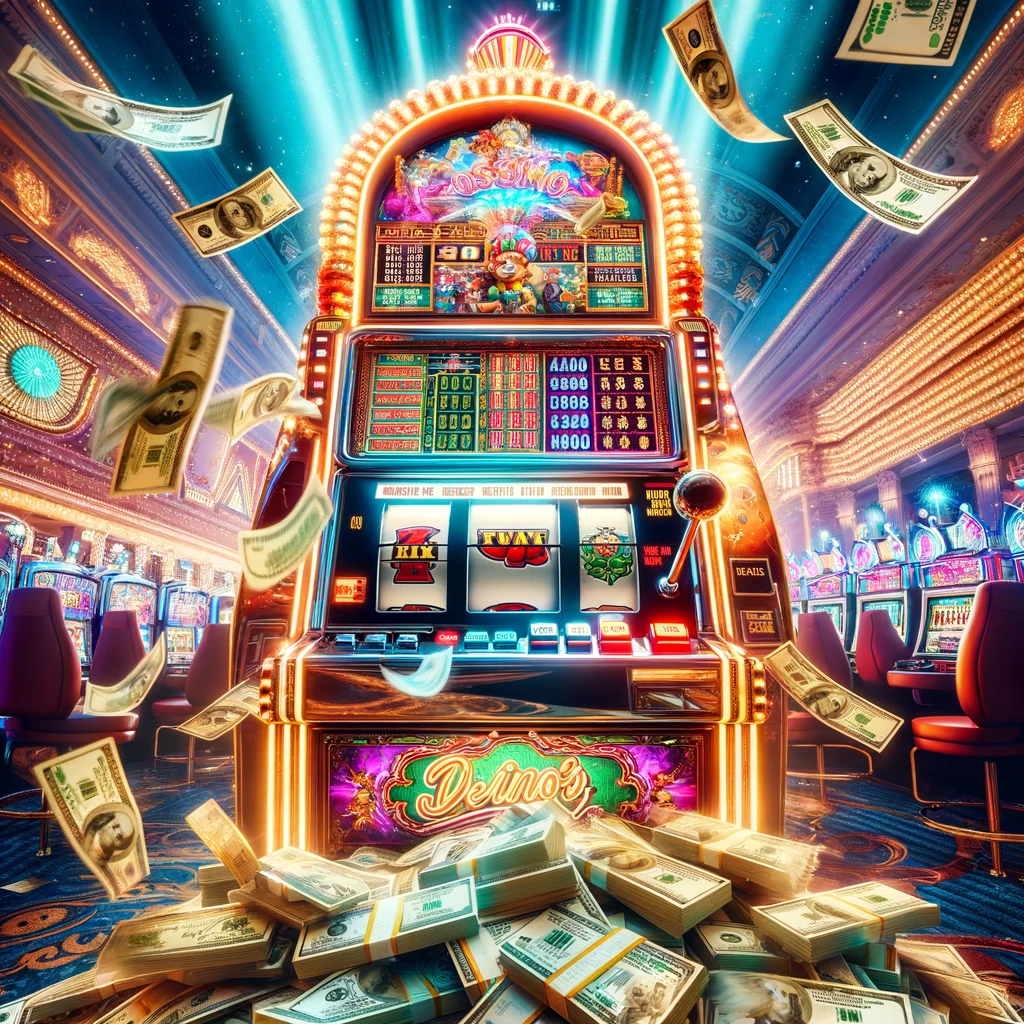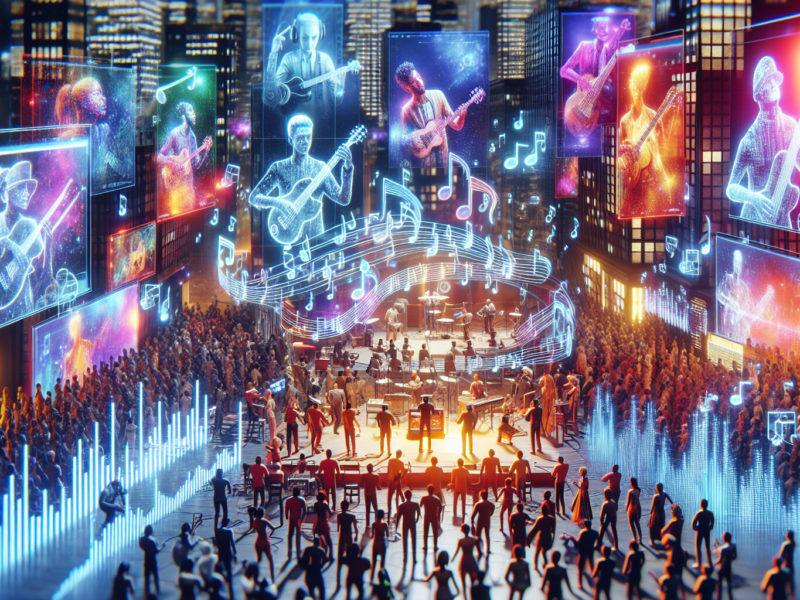
Exploring the Future: Music Innovation in the Digital Age
The landscape of music is evolving at a pace never seen before. From the advent of digital recording to the rise of artificial intelligence in composition, the music industry is undergoing transformative shifts that are pushing the boundaries of creativity and accessibility. In this new era, music innovation stands as a central theme, shaping how artists create, producers mix, and listeners consume music. This article embarks on a journey to explore the future of music innovation in the digital age, delving into the technological breakthroughs that have redefined the artform and the futuristic trends poised to revolutionize the industry once more.
As we venture into this exploration, it is imperative to first trace the roots of music technology to understand its meteoric evolution from analog to digital. This journey will highlight pivotal innovations such as MIDI, digital audio workstations (DAWs), and virtual instruments that paved the way for today’s sophisticated music production landscapes.
Furthermore, the impact of artificial intelligence on music composition and production cannot be overstated. AI-driven tools are charting new territories in music creation, offering algorithmic composition, automated mixing, and mastering solutions that promise unprecedented efficiency and creativity. Profiling notable AI applications like OpenAI’s MuseNet and AIVA, we will uncover the fascinating implications these technologies hold for artists and producers alike.
Lastly, the metamorphosis of music distribution and consumption in the digital age reveals a panorama of innovative possibilities. Streaming services, blockchain technology, and NFTs are revolutionizing how music is accessed and monetized. This section will analyze these transformative trends and offer predictions on the future landscape of music distribution, examining the impacts on artists, record labels, and listeners.
Join us as we delve into these compelling aspects of music innovation, offering a comprehensive glimpse into how technological advancements are shaping the sounds of tomorrow.
The Evolution of Music Technology: From Analog to Digital
In the vast timeline of music history, the transition from analog to digital technology stands out as a pivotal moment of transformation. This evolution has not only revolutionized how music is produced and consumed but has also opened up an array of creative possibilities for musicians and producers. The journey from analog instruments and recording techniques to modern digital tools like MIDI, digital audio workstations (DAWs), and virtual instruments reflects a profound shift that has reshaped the entire music landscape.
Analog Era: The Foundation of Modern Music Production
The analog era laid the groundwork for contemporary music production. Analog instruments such as the electric guitar, Hammond organ, and Moog synthesizer became iconic sounds of their time. Recording techniques developed in this period were intricate and required a deep understanding of acoustics and hardware handling. Tape machines and analog consoles offered a warm and rich sound that many audiophiles and musicians still cherish today.
During this time, producing music was often a painstaking process. Musicians and sound engineers relied heavily on multi-track recording, where individual sections of a piece were recorded onto separate tracks before being mixed together. Editing was manual and time-intensive, involving cutting and splicing tapes to achieve the desired effects. Despite these challenges, the analog era produced some of the most timeless music, with a distinct character and depth that still resonates with audiences.
The Advent of Digital Technology: A Paradigm Shift
The shift from analog to digital technology marked a significant leap in music innovation. The introduction of MIDI (Musical Instrument Digital Interface) in 1983 was a game-changer. MIDI allowed electronic instruments and computers to communicate and synchronize with each other, giving musicians unprecedented control over their music. This connection enabled the layering of complex sounds and the creation of intricate compositions that were previously unimaginable.
Digital Audio Workstations (DAWs) emerged as essential tools in modern music production. Software such as Pro Tools, Logic Pro, and Ableton Live offered versatile platforms for recording, editing, and mixing music. DAWs revolutionized the production process by providing a non-linear editing environment, where changes could be made without altering the original recordings. This flexibility allowed for more experimentation and creativity, as musicians could now manipulate sound with ease and precision.
Virtual Instruments: Expanding Creative Horizons
Virtual instruments, or software-based sound generators, have further expanded the creative horizons of music producers. These digital renditions of traditional instruments offer vast libraries of sounds that can be manipulated in countless ways. Tools like Native Instruments’ Kontakt and Spectrasonics’ Omnisphere provide musicians with access to an extensive range of instruments, from realistic orchestral sounds to futuristic synthesized tones.
The integration of virtual instruments in DAWs enables producers to create complex arrangements that rival live orchestral performances, all from the comfort of their studio. This innovation has been particularly transformative for genres like electronic music, where producers can experiment with a wide variety of sounds and textures to create unique sonic landscapes.
The Impact on Music Creation and Consumption
The transition from analog to digital technology has not only affected how music is made but also how it is consumed. Digital formats such as MP3s and streaming platforms like Spotify and Apple Music have changed the way listeners access music. The ease of distribution and the wide reach of digital platforms have democratized the music industry, allowing independent artists to share their work with a global audience without the need for traditional record labels.
This digital transformation has also given rise to new opportunities in music innovation. Musicians now use social media and online communities to collaborate and share ideas, breaking down geographic barriers and fostering a more connected and diverse music culture. Moreover, the data provided by digital platforms allows artists to understand their audience better, tailoring their creative output to meet the preferences of their listeners.
Conclusion
The evolution of music technology from analog to digital has undeniably reshaped the music industry. The innovations in MIDI, DAWs, and virtual instruments have expanded the creative toolkit available to musicians and producers, enabling them to push the boundaries of what is possible in music. As technology continues to advance, the future of music innovation promises even more exciting developments, paving the way for new forms of musical expression and consumption. In embracing these technological advancements, we are witnessing a dynamic and ever-evolving musical landscape that continues to inspire and captivate audiences worldwide.
The Impact of Artificial Intelligence on Music Composition and Production
As we venture further into the digital age, the role of Artificial Intelligence (AI) in music innovation cannot be overstated. From enhancing the creative process to streamlining production workflows, AI-driven tools are proving to be game-changers in the music industry. This section delves into how AI is revolutionizing music composition and production, profiles groundbreaking AI applications, and discusses the wider implications for artists and producers alike.
Revolutionizing Music Creation with Algorithmic Composition
The advent of algorithmic composition marks a significant milestone in music innovation. AI systems can now analyze vast datasets of musical works to produce new compositions that mimic human creativity. This capability introduces a new paradigm where machines and humans co-create music. AI algorithms can assist in generating melodies, harmonies, and even entire songs, offering artists new sources of inspiration and ideas.
One noteworthy example is OpenAI’s MuseNet, an AI model capable of generating four-minute musical compositions with ten different instruments, blending various styles from classical to contemporary genres. MuseNet leverages deep learning and vast datasets to understand musical patterns, producing compositions that feel both innovative and harmonious. AI programs like MuseNet enable musicians to explore creative possibilities beyond their innate capabilities, potentially leading to new genres and soundscapes.
Automated Mixing and Mastering: Streamlining Production Processes
AI is not just influencing composition; it is also transforming the technical aspects of music production. Automated mixing and mastering tools powered by AI make high-quality music production more accessible to artists regardless of their technical expertise. These tools analyze audio tracks and apply professional-grade adjustments to enhance sound quality, balance, and overall coherence.
One such tool is LANDR, an AI-driven platform that offers automated mastering services. LANDR analyzes the audio data, identifies optimal mastering settings, and applies them in real-time, ensuring that the final track meets industry standards. This democratization of high-quality music production levels the playing field, allowing independent artists and small-scale producers to compete with major labels without extensive resources.
Profiling Notable AI Applications in Music
Several AI applications are making significant impacts in the realm of music innovation. Aside from OpenAI’s MuseNet, AIVA (Artificial Intelligence Virtual Artist) stands out as a leading AI composer. AIVA is designed to create symphonic music, and it has been recognized for its ability to compose emotionally resonant pieces, often used in film scoring and advertising.
AIVA’s process involves analyzing scores from renowned composers to understand their stylistic nuances and then applying this knowledge to generate original compositions. This AI-driven creativity opens up new possibilities for artists and producers, allowing them to incorporate sophisticated, algorithmically generated elements into their work.
The Implications for Artists and Producers
The integration of AI into music composition and production brings a host of implications for artists and producers. On one hand, AI tools offer unprecedented creative assistance, opening up new avenues for experimentation and innovation. Musicians can now explore genres and styles that were previously out of reach, and producers can achieve high-quality outputs efficiently.
However, the rise of AI in music also raises ethical and practical concerns. Questions about ownership and originality of AI-generated music are at the forefront. Who owns the rights to a piece composed by an algorithm? How should credits be attributed? These are important considerations as the industry grapples with the intersection of human artistry and machine creativity.
Moreover, while AI can democratize music production, it also raises the bar for what is considered high-quality output. As AI tools become more prevalent, the competitive landscape may shift, necessitating a deeper understanding of technology among artists and producers.
In conclusion, AI is undeniably a catalyst for music innovation in the digital age. Its potential to transform composition and production processes introduces new creative possibilities and efficiencies, challenging traditional notions of music creation. As AI continues to evolve, its role in shaping the future of music will undoubtedly expand, offering both opportunities and challenges for the industry. Embracing this technology with a mindful approach will be crucial for artists and producers seeking to navigate this new terrain.
The Future Landscape of Music Distribution and Consumption
The digital age has fundamentally reshaped the landscape of music distribution and consumption, with innovations continuously pushing the boundaries of how artists share their work and how listeners access music. From the dominance of streaming services to the emerging roles of blockchain technology and non-fungible tokens (NFTs), the future of music distribution promises to be as dynamic as it is transformative.
The Rise of Streaming Services
Streaming services like Spotify, Apple Music, and Tidal have become the primary means through which audiences consume music. These platforms offer unprecedented convenience and accessibility, allowing users to listen to vast libraries of music on demand. The subscription-based model has democratized access to music, enabling listeners to explore a wide variety of genres and artists without the need for physical media or digital downloads.
The rise of streaming has also impacted how artists and record labels approach music releases. Singles have gained more prominence, as frequent releases can help maintain listener engagement in a crowded market. Moreover, streaming platforms provide valuable data on listener preferences and behaviors, which artists and labels can use to tailor their marketing strategies and tour plans.
Blockchain Technology and Its Implications
Blockchain technology is poised to revolutionize music distribution by providing a decentralized and transparent system for managing music rights and royalties. Through blockchain, each piece of music can have a unique identifier that tracks ownership and usage, ensuring that artists receive fair compensation for their work.
Smart contracts—self-executing contracts with the terms directly written into code—can automate the distribution of royalties, reducing the need for intermediaries and minimizing the chances of disputes or unpaid revenues. This level of transparency and automation can significantly benefit independent artists who often struggle with opaque royalty systems.
Non-Fungible Tokens (NFTs) and New Revenue Streams
The concept of non-fungible tokens (NFTs) has introduced a novel way for artists to monetize their work. NFTs are unique digital assets that can represent ownership of various forms of media, including music. By minting music as NFTs, artists can sell exclusive rights to their songs, albums, or even special editions, offering fans a sense of ownership and rarity.
Artists like Grimes and Kings of Leon have already experimented with NFT releases, generating substantial revenue and creating new engagement opportunities with their fanbase. NFTs can also include bundled content, such as concert tickets or exclusive merchandise, adding further value for collectors and fans.
Emerging Trends and Predictions
Looking ahead, several emerging trends are likely to shape the future of music distribution and consumption:
- Direct-to-Consumer Platforms: With the increasing importance of artist-fan relationships, more artists may opt to use direct-to-consumer platforms to distribute their music. This approach can provide greater control over pricing, data, and fan engagement.
- Enhanced Streaming Experiences: Streaming services are continuously evolving to offer richer, more immersive listening experiences. This includes high-resolution audio, spatial audio formats, and enhanced algorithmic recommendations to curate personalized playlists.
- Integration of Augmented Reality (AR) and Virtual Reality (VR): AR and VR technologies have the potential to create new forms of interactive and immersive music experiences, ranging from virtual concerts to mixed-reality music videos.
- Sustainable Music Practices: As environmental concerns grow, there may be a shift towards more sustainable practices in the music industry. This could involve eco-friendly vinyl production, reducing the carbon footprint of touring, and supporting carbon offset initiatives.
These trends indicate a future where music innovation continues to thrive, enabling artists to explore new creative and revenue opportunities while offering listeners more engaging and personalized experiences. The intersection of technology and artistry is paving the way for a dynamic and interconnected music ecosystem, heralding a new era of musical exploration and enjoyment.
What This Means for Artists, Record Labels, and Listeners
For artists, the ongoing changes in music distribution and consumption present both opportunities and challenges. While the democratization of music distribution allows for greater artistic freedom and direct fan engagement, it also means that artists must navigate a highly competitive landscape. Staying informed about technological advancements and embracing innovative strategies will be key to achieving sustained success.
Record labels must adapt to the evolving digital environment by leveraging data analytics, exploring new revenue streams, and supporting their artists in navigating the complexities of modern music distribution. The ability to innovate will distinguish successful labels from those that struggle to remain relevant.
Listeners stand to benefit immensely from the continued evolution of music distribution technologies. The convenience of streaming, the excitement of owning unique digital assets, and the potential for richer, more immersive music experiences all contribute to a more engaging and personalized music journey.
In conclusion, the future landscape of music distribution and consumption is set to be shaped by ongoing innovations in technology and new models of engagement. As the music industry continues to adapt to these changes, one thing remains certain: the bond between artists and their audiences will continue to grow stronger, driven by the endless possibilities that the digital age brings.
And In The End
As we survey the ever-changing landscape of music innovation in the digital age, it becomes clear that we are at the precipice of a new era. The transition from analog to digital has not only revolutionized the way music is created but has also democratized access to music production tools. Innovations such as MIDI, digital audio workstations (DAWs), and virtual instruments have empowered a new generation of artists to explore uncharted territories in sound.
Artificial intelligence is pushing the boundaries further, making it possible to create, produce, and distribute music with unprecedented ease and precision. Tools like OpenAI’s MuseNet and AIVA are leading the charge, enabling artists and producers to take advantage of algorithmic composition and automated mixing. The integration of AI in music promises to continually reshape the creative process, offering endless possibilities while raising important questions about the role of human creativity.
In distribution and consumption, the shift towards streaming services, blockchain technology, and the advent of NFTs herald a new chapter in the music industry’s evolution. These developments promise to provide artists with novel avenues for revenue and fan engagement while transforming how listeners interact with music. As we look ahead, it is clear that the music industry will continue to innovate, adapt, and grow, driven by technological advancements and the ever-evolving tastes of global audiences.
Ultimately, the journey of music innovation in the digital age is a testament to the resilience and creativity of artists, producers, and technologists. As new tools and platforms emerge, the future of music looks brighter than ever, promising a rich tapestry of sounds and experiences that will inspire generations to come.



